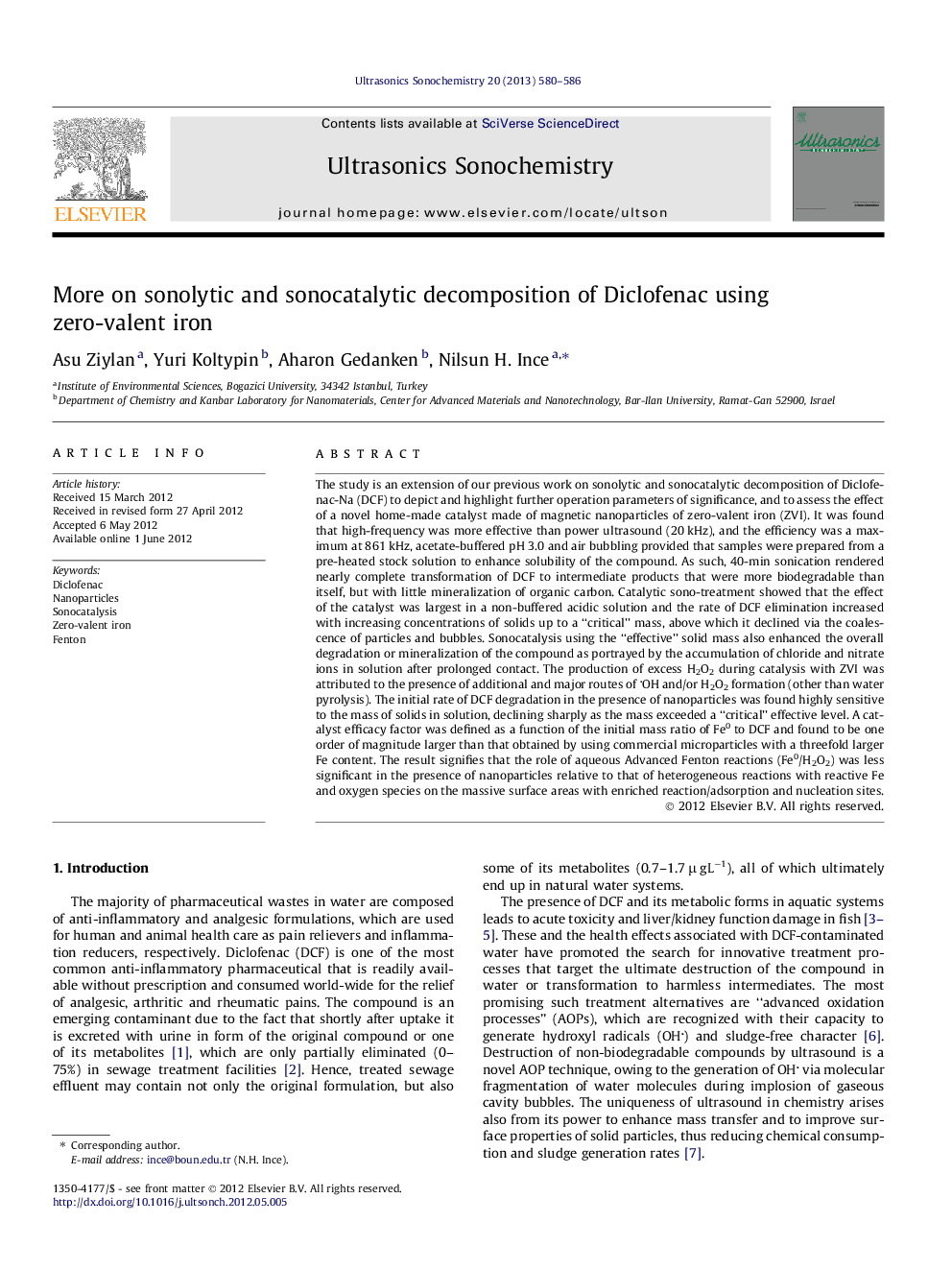| کد مقاله | کد نشریه | سال انتشار | مقاله انگلیسی | نسخه تمام متن |
|---|---|---|---|---|
| 1269129 | 972440 | 2013 | 7 صفحه PDF | دانلود رایگان |

The study is an extension of our previous work on sonolytic and sonocatalytic decomposition of Diclofenac-Na (DCF) to depict and highlight further operation parameters of significance, and to assess the effect of a novel home-made catalyst made of magnetic nanoparticles of zero-valent iron (ZVI). It was found that high-frequency was more effective than power ultrasound (20 kHz), and the efficiency was a maximum at 861 kHz, acetate-buffered pH 3.0 and air bubbling provided that samples were prepared from a pre-heated stock solution to enhance solubility of the compound. As such, 40-min sonication rendered nearly complete transformation of DCF to intermediate products that were more biodegradable than itself, but with little mineralization of organic carbon. Catalytic sono-treatment showed that the effect of the catalyst was largest in a non-buffered acidic solution and the rate of DCF elimination increased with increasing concentrations of solids up to a “critical” mass, above which it declined via the coalescence of particles and bubbles. Sonocatalysis using the “effective” solid mass also enhanced the overall degradation or mineralization of the compound as portrayed by the accumulation of chloride and nitrate ions in solution after prolonged contact. The production of excess H2O2 during catalysis with ZVI was attributed to the presence of additional and major routes of OH and/or H2O2 formation (other than water pyrolysis). The initial rate of DCF degradation in the presence of nanoparticles was found highly sensitive to the mass of solids in solution, declining sharply as the mass exceeded a “critical” effective level. A catalyst efficacy factor was defined as a function of the initial mass ratio of Fe0 to DCF and found to be one order of magnitude larger than that obtained by using commercial microparticles with a threefold larger Fe content. The result signifies that the role of aqueous Advanced Fenton reactions (Fe0/H2O2) was less significant in the presence of nanoparticles relative to that of heterogeneous reactions with reactive Fe and oxygen species on the massive surface areas with enriched reaction/adsorption and nucleation sites.
Journal: Ultrasonics Sonochemistry - Volume 20, Issue 1, January 2013, Pages 580–586